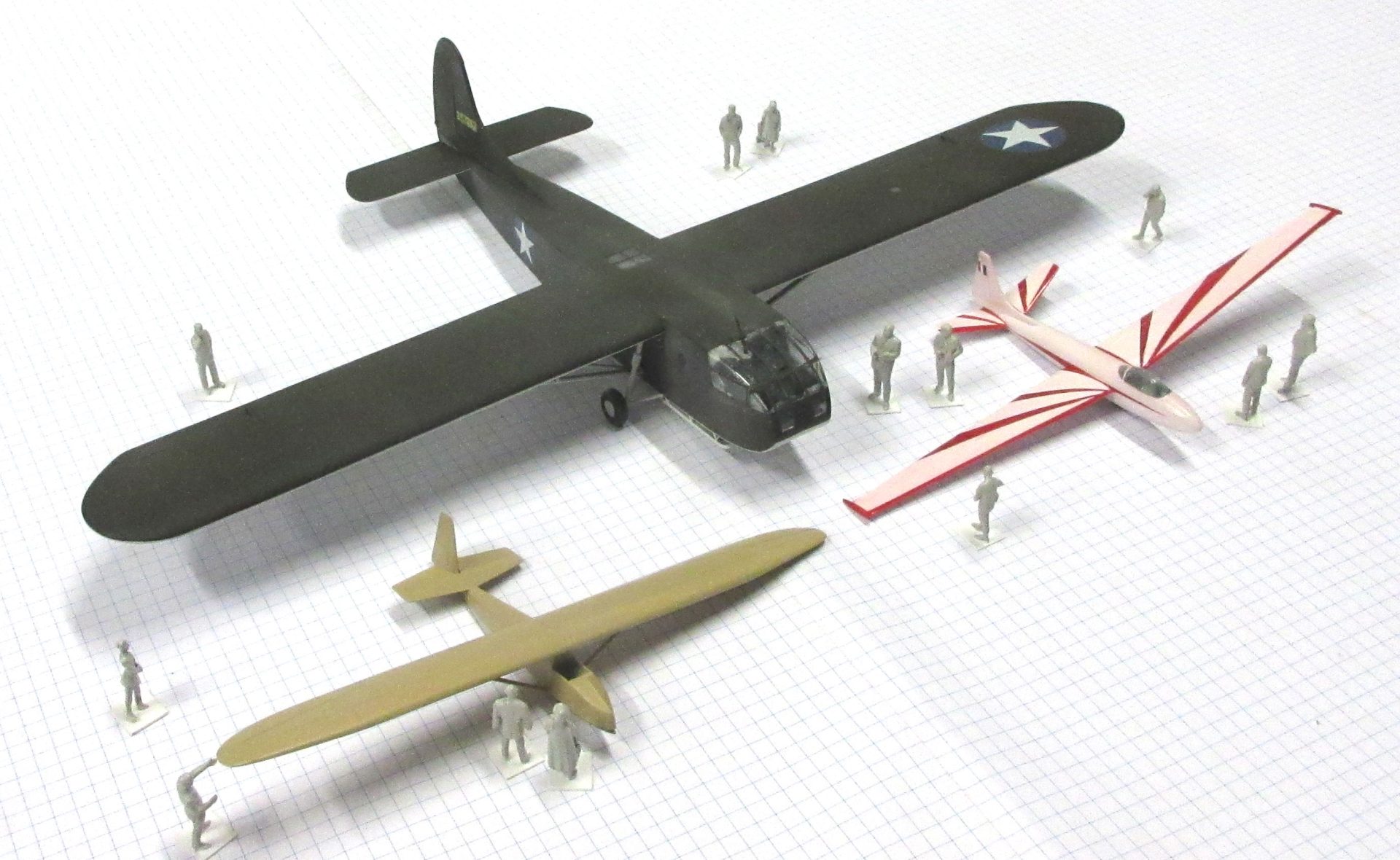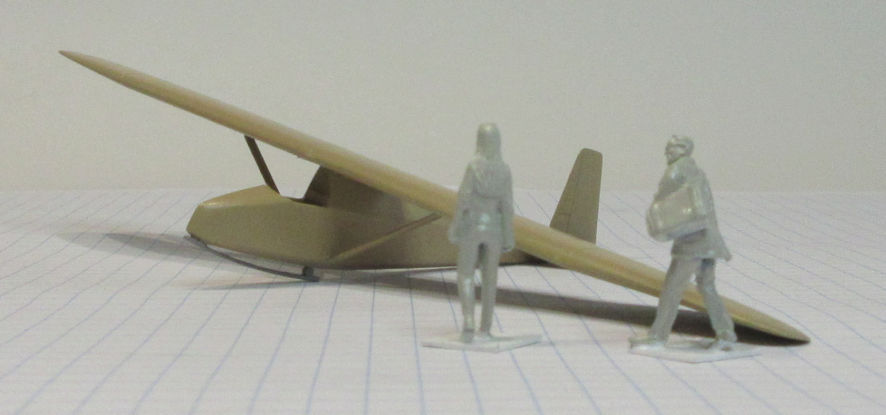Gliders
Schneider Grunau Baby 1 – Waco CG-4A – Castel Mauboussin CM8/13

Looking at Swiss aircraft, as we did last week, I was struck by the appearance of the lovely little, yellow, F+N N-20.1 Arbalete glider that was made to test the concept of the Aiguillon fighter. This set me wondering how many gliders there were in the Museum so I set out to see. There were more than I had thought and, in choosing three to look at today, I forgot all about the Arbalete. Never mind, you can look for yourself now, or we will come back to it some time later.
Schneider Grunau Baby 1 in 1/72 by CMR
This aircraft dates from the beginnings of popular gliding in the late 1920s. It was promoted as an inexpensive way to get into flying and many of the first gliders like this one were made by enthusiasts or clubs from plans. It could be used as a trainer or for cross-country flying and was mildly aerobatic. Four versions of this glider were made, the Baby 1 and Baby II before the war and two more versions with enclosed cockpits after the war. Eventually 6,000 were manufactured and flown all around the world.
Anyone who has experience working with resin kits will have no trouble with this one which is, as you can see, quite simple and easy to assemble. This is, as far as I can tell, the only kit of the Baby 1 although there are many kits of the Baby 2 which was more produced than the first version. There are lots of reviews of the Baby 2 kits but none that I could find of the Baby 1. So let me summarize what I thought of this kit – you would have to work hard to make a mess of this kit, the only slight challenge is in making sure that the wings are set square on the fuselage. While there are plenty of different colour schemes for the Baby 2 I could find nothing very distinguishing about the Baby 1 which I painted in one of MRP’s Clear Doped Linen lacquers.
Waco CG-4A in 1/72 by Italeri
This aircraft was the major American transport glider used by the United States and allied forces during World War II. It could carry 13 troops, a jeep or up to 1904kg of cargo. Almost 13,000 were manufactured by sixteen factories in the United States. It was smaller than the larger British Airspeed Horsa glider which made it useful because it could land in smaller areas. They were first used during the invasion of Sicily in July 1943 and in most allied airborne operations after that. They were usually considered as disposable and those remaining in service at the end of the war were soon sold off as surplus too.
Apart from a very old vacform kit the only kit of this glider is the Italeri one that was first published in 1975. The result is a fairly simple kit with a few little construction bugs and a simple cockpit that could do with some enhancement since it is so open and obvious. There is also some interior fittings that could do with some detailing if that is your thing. My major problem was in trying to figure out how the tow cable attachment worked because the instructions I had were not very specific. There is a good build review on the Modelling Madness webpage and the build review on the Hyperscale site includes some photos of a scratch built cockpit that I wish I’d seen when I made my model from this kit.
Castel Mauboussin CM8/13 by Dujin
The Castel Mauboussin CM8 was an aerobatic glider designed in France immediately after World War 2 and first flown in June 1949. It was made in several versions including this CM8/13 version which had a wingspan of 13meters. It was a pleasing glider to fly and its performance was enhanced, in one version, by the addition of a small jet engine on top of the fuselage which eventually evolved into the French Fouga Magister trainer aircraft.
This little resin kit was probably made some time in the 1990s. It is a typical Dujin kit which gives you all the basic bits you need, some useful but limited instructions, and the rest is up to your modelling experience and skills. I’ve had a fair amount of experience with these kinds of kits but also posses limited skills, as usual. There is very little information about this aircraft or kit on the internet but if you can find a copy of this kit I hope you have as much fun building it as I did mine.



